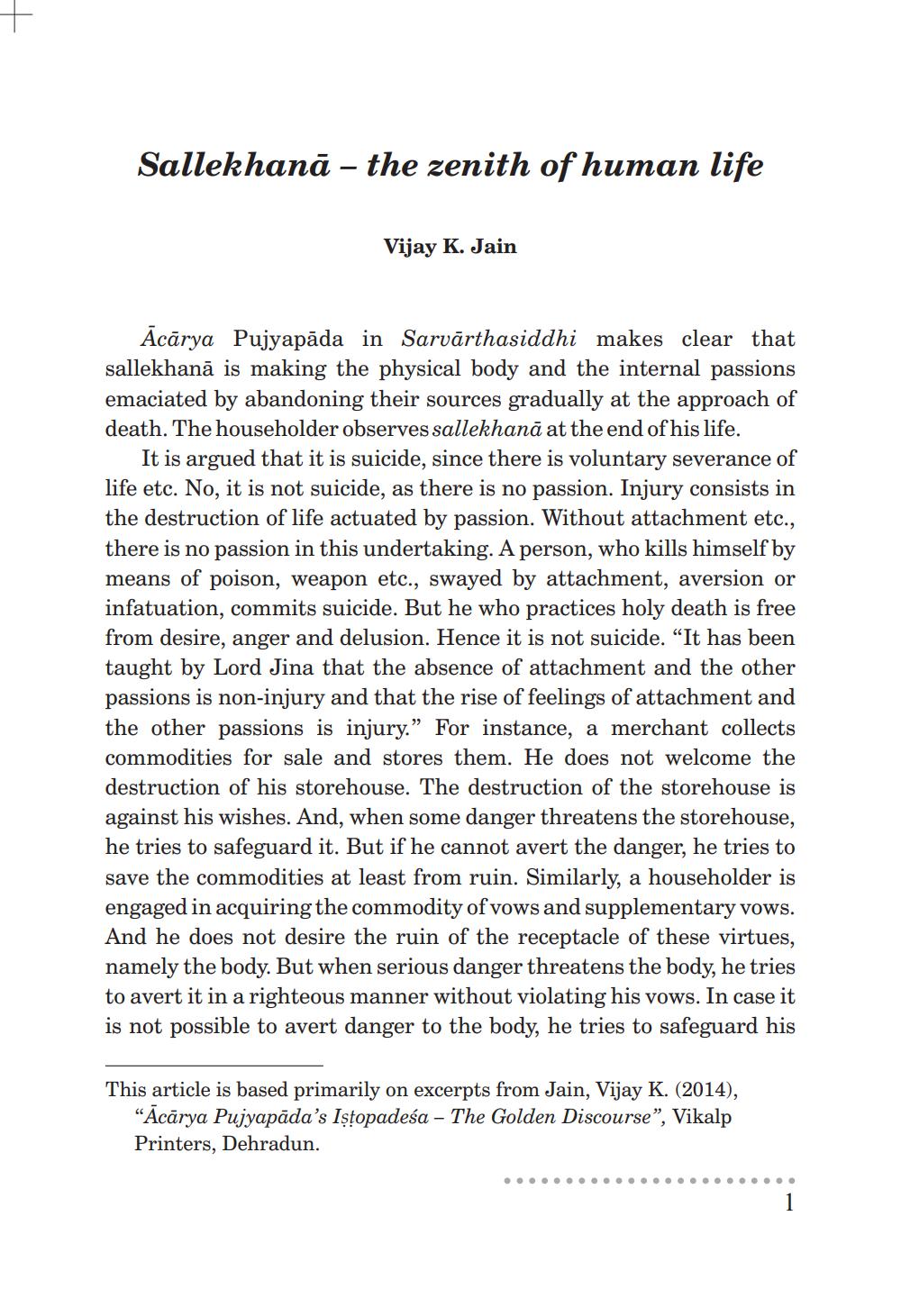Book Title: Sallekhana Zenith of Human Life Author(s): Vijay K Jain Publisher: Vijay K Jain View full book textPage 1
________________ Sallekhanā - the zenith of human life Vijay K. Jain Acārya Pujyapāda in Sarvārthasiddhi makes clear that sallekhanā is making the physical body and the internal passions emaciated by abandoning their sources gradually at the approach of death. The householder observes sallekhana at the end of his life. It is argued that it is suicide, since there is voluntary severance of life etc. No, it is not suicide, as there is no passion. Injury consists in the destruction of life actuated by passion. Without attachment etc., there is no passion in this undertaking. A person, who kills himself by means of poison, weapon etc., swayed by attachment, aversion or infatuation, commits suicide. But he who practices holy death is free from desire, anger and delusion. Hence it is not suicide. "It has been taught by Lord Jina that the absence of attachment and the other passions is non-injury and that the rise of feelings of attachment and the other passions is injury." For instance, a merchant collects commodities for sale and stores them. He does not welcome the destruction of his storehouse. The destruction of the storehouse is against his wishes. And, when some danger threatens the storehouse, he tries to safeguard it. But if he cannot avert the danger, he tries to save the commodities at least from ruin. Similarly, a householder is engaged in acquiring the commodity of vows and supplementary vows. And he does not desire the ruin of the receptacle of these virtues, namely the body. But when serious danger threatens the body, he tries to avert it in a righteous manner without violating his vows. In case it is not possible to avert danger to the body, he tries to safeguard his This article is based primarily on excerpts from Jain, Vijay K. (2014), "Acārya Pujyapada's Iṣṭopadeśa - The Golden Discourse", Vikalp Printers, Dehradun. 1Page Navigation
1 2 3 4 5
